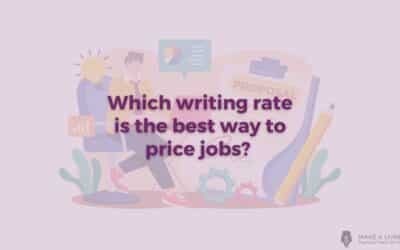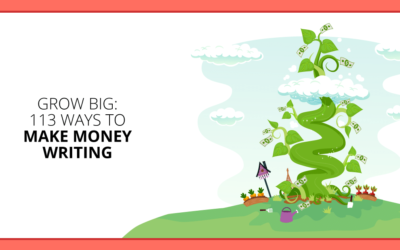
Do you have a book idea, but aren’t sure whether or not it would succeed in today’s market?
Undecided whether or not that book would be worth all your time and money?
You’re not alone. Many authors ask this very question. With Amazon becoming more crowded, some believe that you have to be famous or have a following before succeeding in self-publishing.
But this isn’t true.
No longer do you have to blindly guess at whether or not a book will do well on Amazon. It turns out, there are vital numbers, analytics, and even some tools that will help any author figure these things out before they decide to write a book.
I like to call this process Book Idea Validation
Book idea validation, a/k/a book market research, doesn’t guarantee sales and success – I’m not talking about a silver bullet. However, it does give you a better understanding of the book market before you dive in.
If you’d like to know more about your potential book market, and give your book a better chance to succeed, then read on.
Crucial components to a good book idea
If you’re a popular writer with a large email list, you could write just about anything, use your platform, and succeed, to a certain degree.
But let’s face it — most of us just aren’t in that situation.
Instead, we need our book to show up in front of the right customers when they’re looking for it online, on a big book site like Amazon. This is also known as making a book that is organically discoverable.
Therefore, to ensure your book idea has a good chance of being discovered naturally by your target audience, you need to verify three things:
- Are people actively looking for that book idea?
- Are people willing to spend money for that kind of book?
- Is there too much competition?
Now, let’s discuss how you do that.
The 4-step book validation process
To properly answer the three questions above, you’ll need to perform four steps.
These four steps may seem a little tedious — however, they are positively a piece of cake compared to writing a complete book that fails epically. Keep that in mind.
Also, if you’re not up to doing the steps below or it feels a little too tedious, there is a self publishing program that will do this for you instantly.
What are these four steps?
Step 1 – Organize your information
We’re going to be looking at a lot of important information as we step through this process. Therefore, it’s best to ensure you’re organized.
If you’d like to save time, download my free Book Idea Validation worksheet. It will have all the necessary headers, equations, and even recommendations.
Step 2 – Research your book idea
Sadly, Amazon doesn’t tell us how many people are searching for something on their platform. Instead, we are left to assume and guess.
However, there are two ways you can get better data to help you figure out how many people are interested in that idea or phrase:
The first is a free method. Go to Google’s Keyword Planner and type in your idea or phrase (you’ll need a gmail or other Google-related account). Keyword Planner will check your phrase, give you suggestions, and tell you how many people type that phrase into Google per month.
Sure, Google isn’t Amazon. But they’re both search engines, and again, this is some good data. In my experience, if there is interest for that topic on Google, there’s usually a proportional interest on Amazon as well.
The other method uses my tool, KDP Rocket. This program not only gives book idea suggestions, it gives you the Google searches per month, estimated Amazon searches per month and tells you how much money that idea is making on Amazon already.
Step 3 – Learn if your idea will make money
It’s easy to get caught up in the excitement of finding an idea in which there is interest as a result of Step 2. It’s important not to get carried away, though — as we’ve discussed, interest in an idea doesn’t always mean the idea is a moneymaker.
So how do you take things further, and judge whether an idea represents a potentially profitable book?
Follow these steps (which track the numbers on the worksheet):
- Search for your idea or phrase from the preceding step in the Kindle store.
- Write down the Amazon Best Seller Rank (ABSR) for each of the top 14 books (see the picture below).
- Plug each ABSR into my free Kindle Sales calculator tool, which will convert ABSR into books sold per day.
- Multiply the number of books sold per day by the sales price to get the gross daily revenue.
- Multiply the gross figure by 0.7 (if each book is priced between $2.99 and $9.99) or by 0.3 if it’s sold for any other amount. This gives the actual author earnings after Amazon takes their cut.
- Add all the daily author earnings figures together and divide by the number of books you’ve calculated for (e.g divide by 14 for the front page).
- This will give you an average daily earnings figure.
The below image shows where to find the Amazon Best Seller Rank (ABSR) for each book –
If the number you get in step 7 is an amount you’d be happy to earn, proceed to the next step. Also, you can compare these numbers between different ideas and see which one seems to be more profitable.
Step 4 – Determine if there’s room for competition
Everyone loves a popular, profitable book idea — including your competitors. If you’ve successfully progressed an idea through the preceding stages, you still have work to do.
It’s kind of like Goldilocks and the porridge. You need to make sure the balance of competition and interest is just right. Not enough interest probably means very little competition, but also a lack of potential profit. A lot of interest could well result in a lot of competition — which also makes earning money difficult.
The key is to find the golden mean of an idea with enough interest but low enough competition. Here’s what needs to be kept in mind as you look at the competing books:
- How many results show up in the Kindle store in total for your idea or phrase
- The ABSR for the top book
- The average of the ABSR for the top 3 book results
- The average of the ABSR for the top 14 book results
These numbers show, on average, the competitiveness of a book idea. They can also be used to easily compare one book idea against another, in terms of the competitive landscape.
So far, we’ve only looked at the numbers. However, there are certain parts that are more qualitative in nature. So, before making your decision, check the following and use your judgment:
- Title and Subtitle – Have these been chosen with your idea or phrase in mind? Are they targeting that term or phrase?
- Book Cover – Are these eyesores, or masterpieces? Books with bad covers are easier to beat.
- Description – Well-written and engaging, or drab and dreary? As writers, this is one area we stand a great chance of achieving competitive advantage. Also, did they format the description to look good on Amazon?
- Author Reputation – Good luck going up against Ernest Hemingway or other super-famous authors.
If you want to save all the number-crunching, and your sanity, you can check out KDP Rocket — it does all of the above for you, in a matter of seconds.
Let Amazon tell you what’s popular
Just like I was always told growing up, “If at first you don’t succeed, try, try, try again.” Finding a good book idea ISN’T EASY! If it was, we’d all be pretty rich.
After going through all of the steps above, you may want to go back to the drawing board and come up with something totally different, or dig a little deeper into your original idea.
If the latter applies, be sure to look for more niche variations of your idea. One way to do this is by putting your idea into the Amazon search bar, followed by each letter of the alphabet (e.g My Idea a, My Idea b) etc.
In doing this, Amazon’s autocomplete will show you the most searched for phrases related to your seed idea. Here’s an example:
This is one way to get more specific and find more niche ideas to pursue. Also, look at the list of suggestions that Google’s Keyword Planner gives you as well. Both are great resources to get the creative juices flowing.
Beyond book idea validation
Now you know how to give your book idea the best chance of success before you take the time to write it. But does it really work?
Starting from ground-zero using a pen name (meaning I didn’t use fame, email lists, or any existing marketing platform), I’ve generated almost $100,000 in revenue from just six books in 2.5 years, using the processed I’ve outlined.
If you want this to happen with your book, follow the process to validate your idea. Then you can get to the best part — the actual writing.
Imagine how much better it will be to write with the peace of mind that you stand a good chance of making money, when it’s done.
If fear has been holding you back from making the leap and writing a book, hopefully this process will make things a little easier for you.
Got an idea for a book? Let’s talk about it in the comments.
Related: How to make money writing














